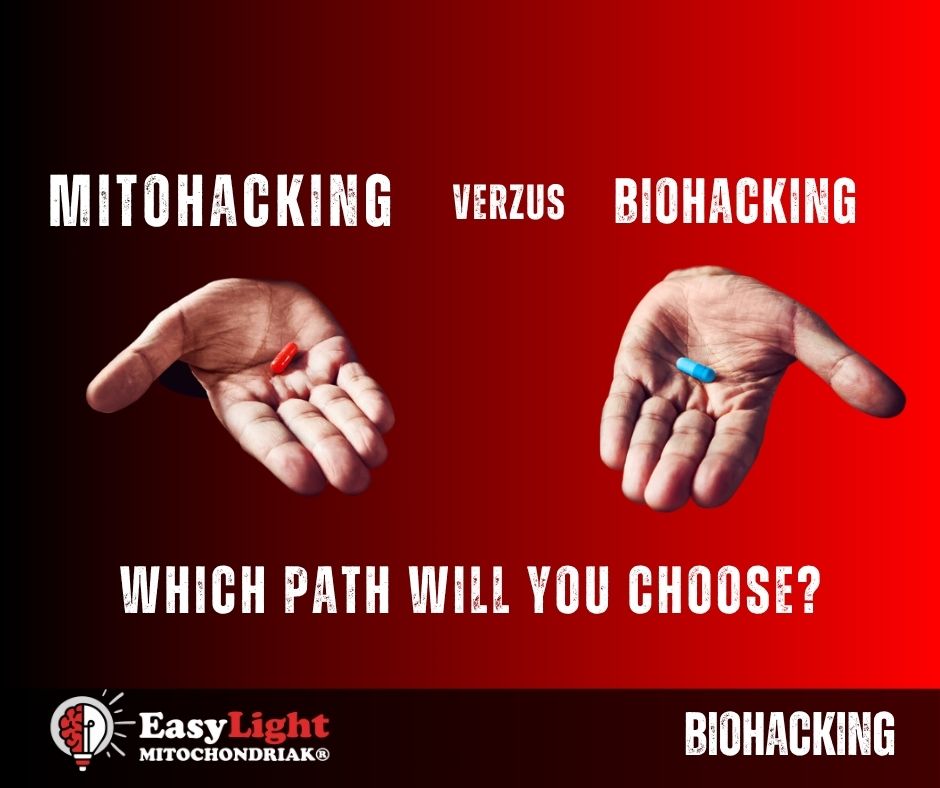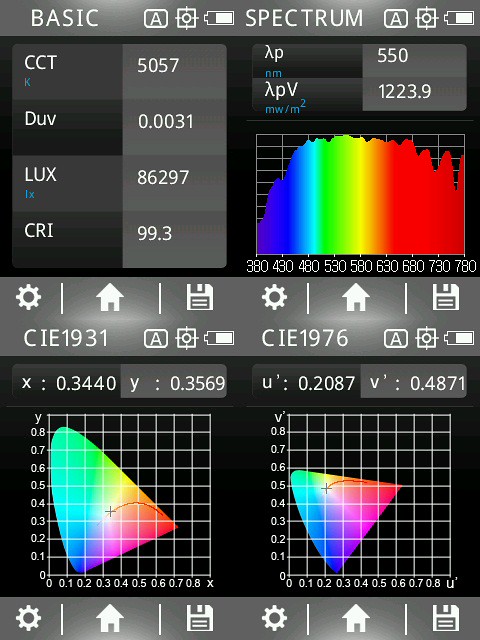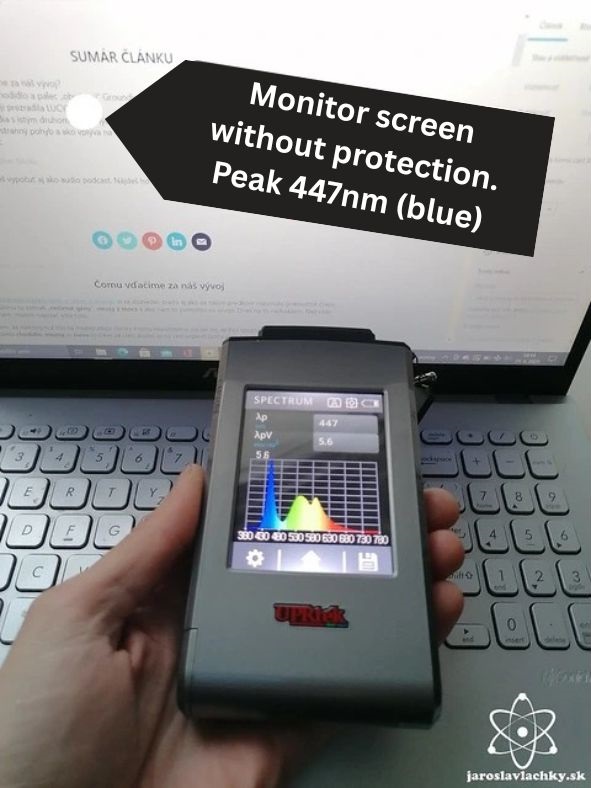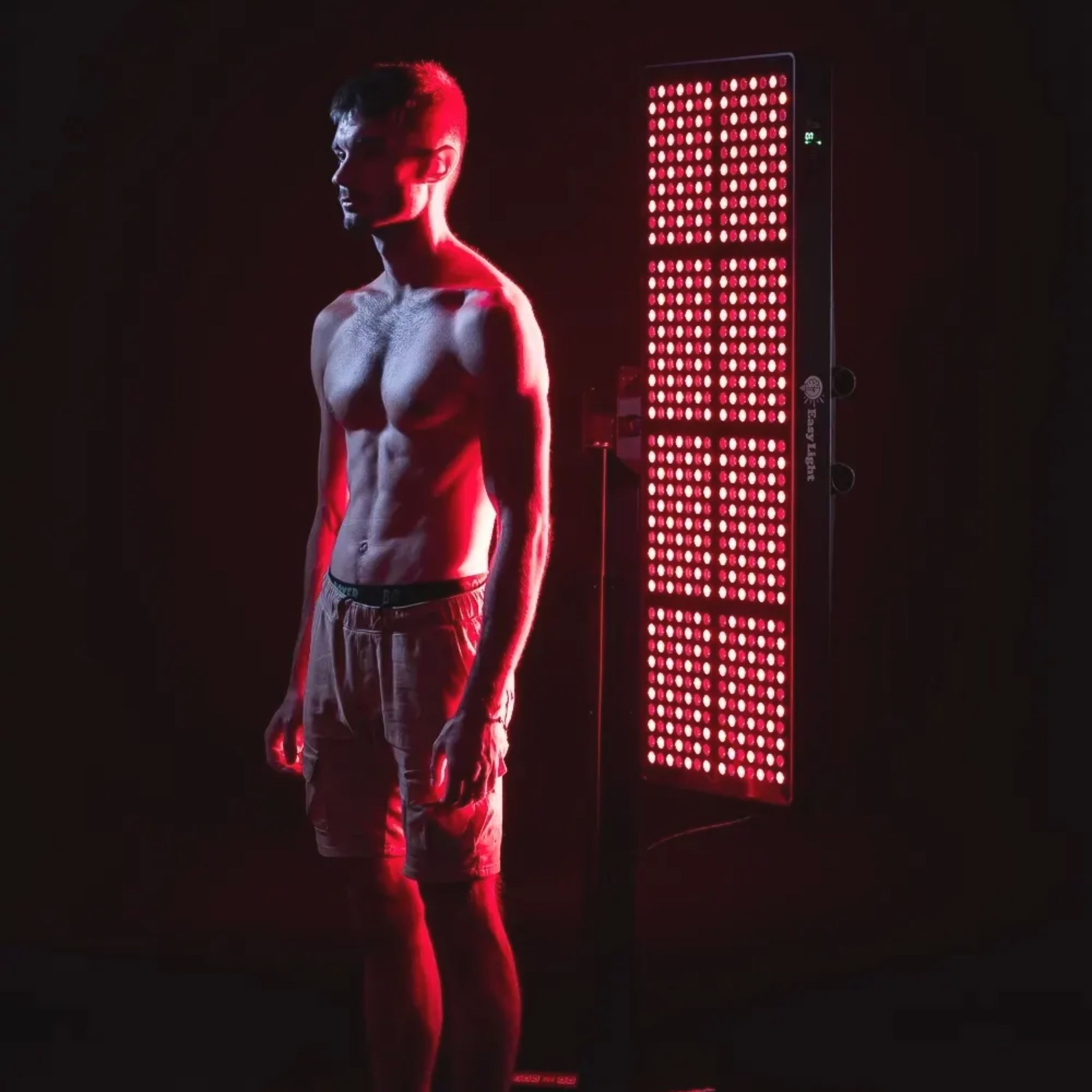Biohacking versus mitohacking? Mitochondria decide
Once upon a time, these were common mornings for our grandparents and great-grandparents, and today it is called modern "biohacking". You know it, right? Grandparents didn't have hot water, so they mostly bathed in ice water, although they didn't need to call it that like they do today, like "winterisation".
In today's article, we want to show you why it was never really about modern biohacking, but rather about the then-common care of mitochondria and circadian rhythms. This is what we call mithohacking.
Contents:
- What is biohacking?
- What is mitohacking and what is the difference between them?
- Why we should focus primarily on our mitochondria today?
- Practical tips on how to incorporate mitochondrial care (i.e. mitohacking) into your daily life.
What is biohacking:
Biohacking is an approach in which we attempt to "hack" our own bodies and minds. This approach consists, on the one hand, of adjusting your lifestyle and focusing on working with your body, breath, and mind, but on the other hand, of using modern technologies, supplements, and scientific knowledge. You can therefore imagine it as a set of specific activities, procedures and therapies, the aim of which is to positively influence and optimize the functioning of your body, both physically and psychologically.
Biohacking is basically suitable for anyone who wants to be happier, more productive, more focused, more resilient, and less likely to get sick. For example, you can achieve with it:
- Increasing physical condition.
- Improving the psyche and alleviating depression.
- Strengthening immunity and reducing the risk of developing various diseases.
- Losing excess weight and lowering blood pressure.
- Improved sleep and digestion.
- Improving mood and increasing productivity.
Now let's look at mitohacking and their main difference.
What is mitohacking and what is the difference between biohacking and mitohacking:
As you could hear in the video, mitohacking differs from the very beginning in its approach, because it always puts these 2 priorities first: Mitochondria and environment/light.
- Mitochondria - Everything we do, we always evaluate first in the context of our mitochondria - is it good for them, or vice versa.
- Emvironment and light - we become aware of and adapt to the light that surrounds us for most of our day/life.
Once we realize this and target these two factors, only then can we add anything else. This is the main difference between biohacking and mitohacking, or mitochondriak. Mitohacker and mitochondriak are synonymous in our jargon).
A biohacker often uses modern technologies or nutritional supplements to hack or supplement something that the body is missing, while a mitochondrial hacker, on the other hand, solves his mitochondria because he knows that when the mitochondria are strengthened, they will produce everything important on their own..
A typical example is nutritional supplements, such as the melatonin supplement..
Melatonin is a hormone that our body and even mitochondria produce on their own (also based on infrared and UV light), and if we take a dietary supplement to artificially increase it, our body and mitochondria will respond by changing its own production. Well, if they're already creating less of it now, what's going to happen next?

Why we should focus primarily on our mitochondria today:
Even in the example above with melatonin, you can understand why it is crucial to focus on mitochondria (our little "power plants") and the environment/light that surrounds us.
If we are only under artificial lighting all day long, which does not contain infrared light or UV light, and for the few minutes a day when we are in sunlight, we are almost completely covered by clothing or sunglasses, our mitochondria and circadian rhythm simply cannot produce or secrete melatonin.
The same applies to many other hormones, substances, and of course the quality of our sleep, appetite, energy, etc. That's why at EasyLight Mitochondriak® we try to educate people first and foremost and then provide you with many practical tools, tips and ways to improve your home or work environment.
Are you curious about what kind? Let's take a look.
Practical tips on how to incorporate mitochondrial care (i.e. mitohacking) into your daily life:
1. First, look around you and notice the light you (don't) have there. If you are locked in the office or just at home most of the day, you need to supplement red and infrared light.
- Take more frequent breaks during the day, go to the window, balcony/terrace, take walks at least every hour, and try to expose yourself to natural light.
As an example, we are attaching two images that we took ourselves with our spectrometer, the first of which shows the spectrum of sunlight and the second a regular screen, which is how it looks indoors, in an office. Under normal conditions, we have all the colors of the rainbow available to us during the day, as well as UV (left), and a huge amount of red and especially infrared light (right and continuing even further). We usually only have a lot of blue indoors and we lack red and infrared.


2. If you suffer from poor sleep, lack of energy, and don't spend enough time outside undressed to the waist, consider red light therapy.
You can also use some of our Mitochondriak® LED therapy devices, which have suitable wavelengths and proven benefits. You can apply the therapy for a few minutes a day, which will make your mitochondria get the most out of it in a short time.
3. If you use regular white LED lights at home after dark, replace them with dim red lighting.
The blue light emitted by our phones, TVs, and computers brings with it many negatives because it "tricks" our brain and circadian rhythm into thinking it's daytime, which can impair our sleep quality and ability to fall asleep. In this way, it also impairs our mitochondria, which then produce less energy.
Therefore, try to limit blue light, at least in the evening hours. A simple way is to get suitable and proven blue light blocking glasses or even purchase suitable interior lighting that does not contain blue light!
4. Expose yourself to sunlight in the morning and move around during the day.
Getting enough sunlight in the morning resets and maintains our circadian rhythm and can also improve sleep quality at night. It is at night that a large portion of our mitochondria are subsequently repaired/recycled.
Exercise is also a great way to support your mitochondria. Move naturally and consistently, for at least a few minutes, throughout the day.
5. Don't eat at least 3 to 4 hours before bedtime.
Digestion and metabolism are also governed by circadian rhythms, and it is during sleep that our mitochondria should no longer metabolize food so that they have time to "repair" (recycle) themselves.
Bonus tip: Connect with the earth and use barefoot or grounding.
Grounding is a conductive connection to the earth that allows us to draw electrons from the earth and at the same time prevent unwanted oscillations that arise as a result of artificial electromagnetic fields (wifi, bluetooth, ...).
However, it is often difficult to find time during the day to walk barefoot in nature, which is why Mitochondriak® grounded barefoot shoes are a great solution, allowing you to enjoy all the benefits of grounding with every walk, without having to think about being barefoot.
.png)

.jpg)
.jpg)
.jpg)